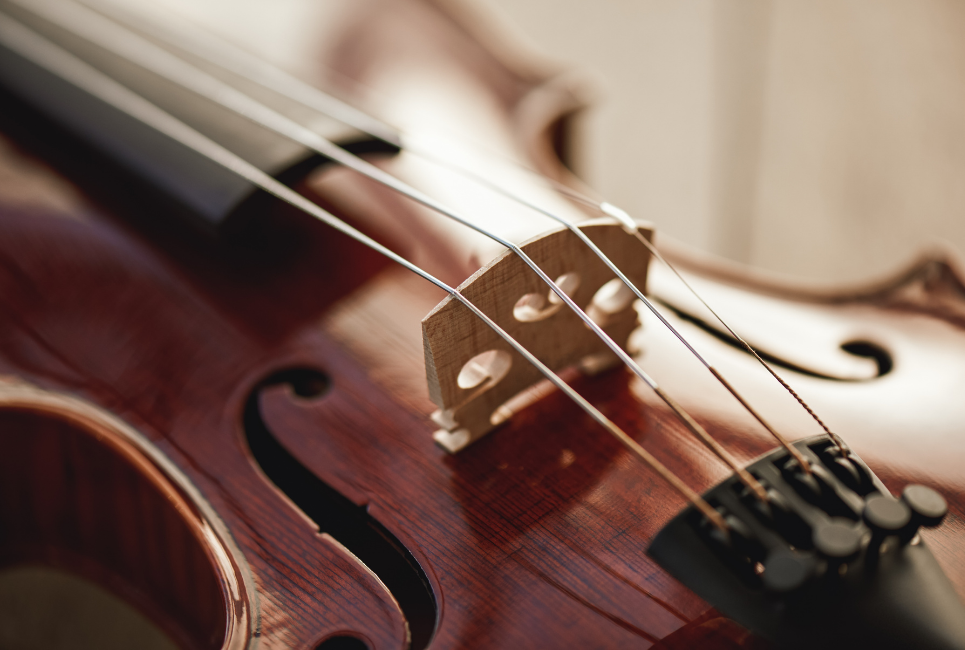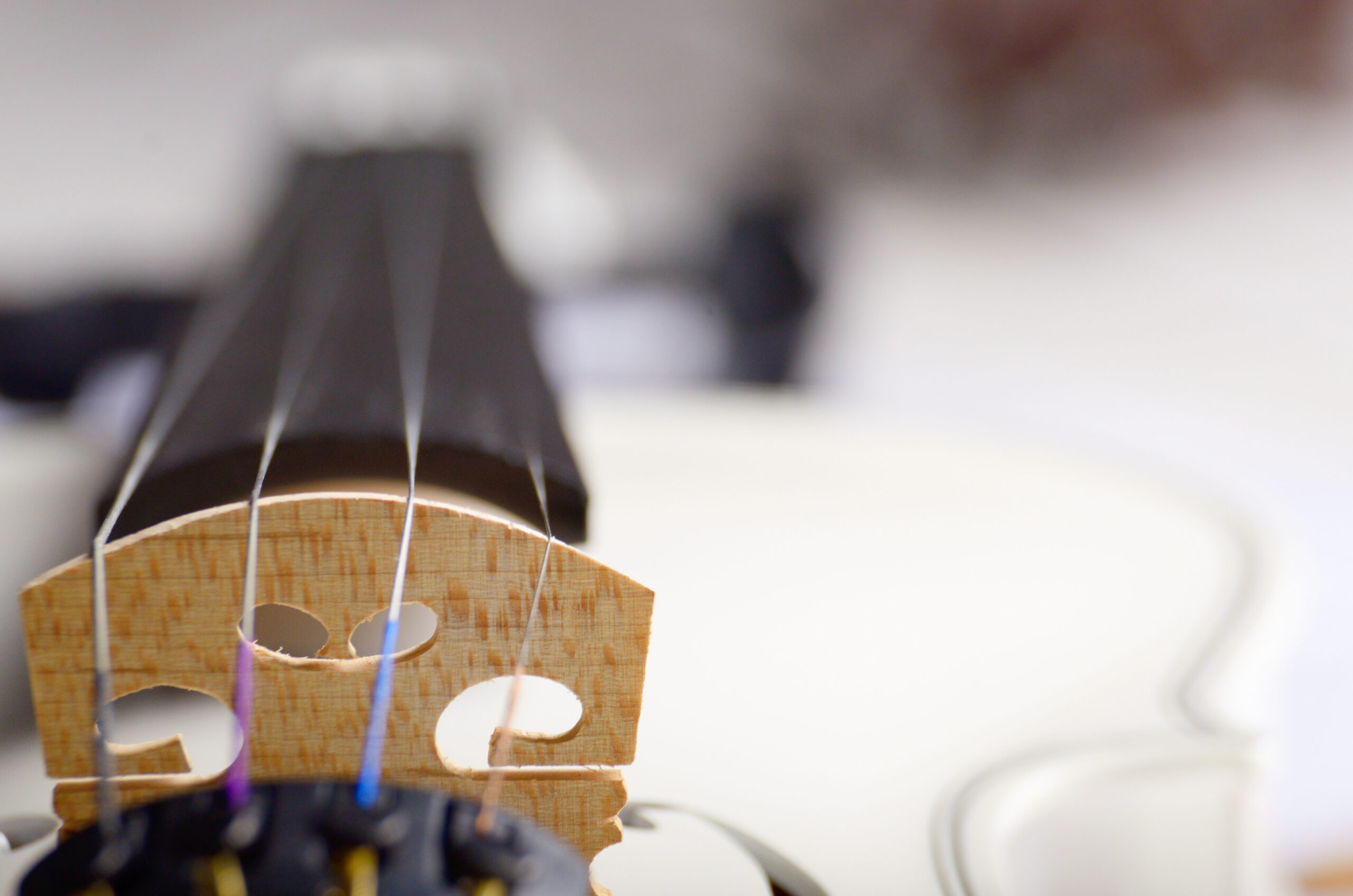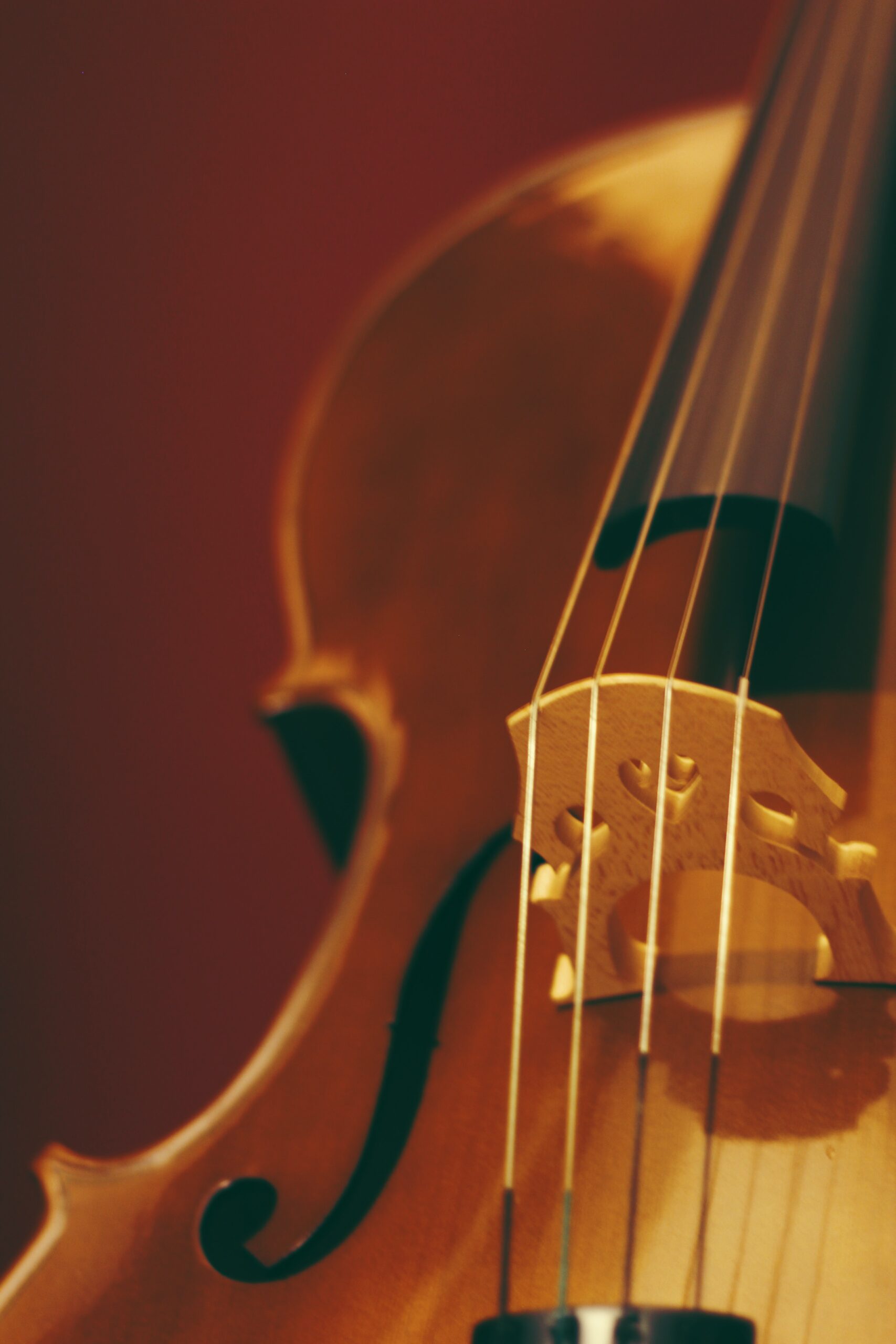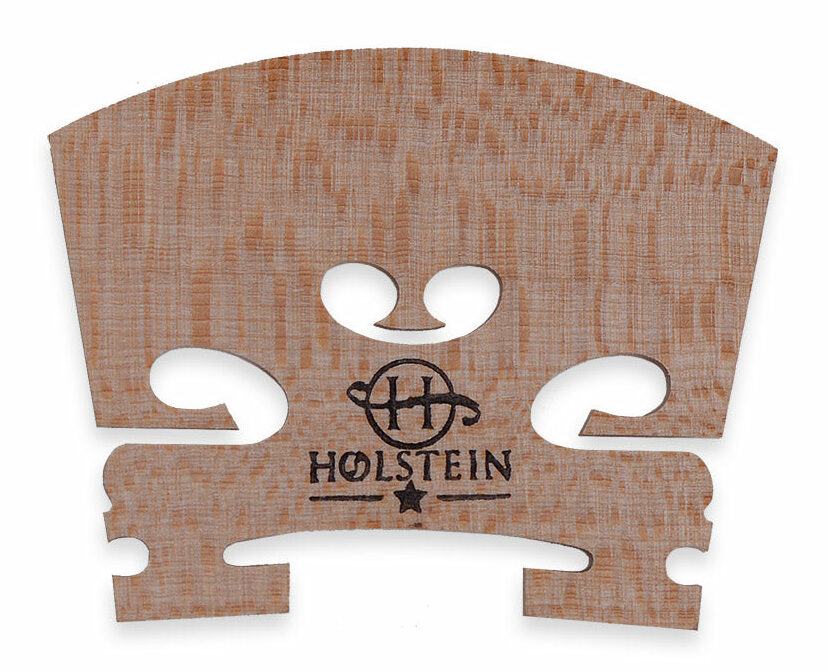- How to Find the Best 5 String Violins - April 21, 2022
- How to Hold a Violin Bow - April 21, 2022
- How to Hold a Cello Bow - April 17, 2022
Summary: Knowing how to find the best violin bridge comes down to choosing the right size for your instrument, the suitable quality materials, and adjusting the bridge to fit your violin precisely.
Your violin has many different violin parts, and they each serve an essential purpose. Whether you choose a beginner violin or an advanced violin, the bridge is integral to the sound you can produce. It’s pretty common for most people to ignore the violin bridge until it falls or breaks. But if you invest in any stringed instrument, you need to understand and appreciate every part and how it influences the music you can make.
Why You Need the Best Violin Bridge
Why do you need to find the best violin bridge? What does it even matter? Well, the violin bridge serves an essential purpose. It lifts your strings above the instrument so that they are in a proper position. It also conveys the vibrations from your bow technique and the way you play directly into the body of your instrument, which serves as the natural amplifier. If any step in this process doesn’t work properly, the vibrations of your violin bow against your violin strings won’t be converted into music and won’t be projected for your audience (or, in my case, just my cat) to hear.
Acoustic instruments like a violin don’t produce a lot of vibration when you pluck the strings on their own. The vibration has to be amplified through the chamber of your violin, through the inside of the instrument before it projects into a sound that can be appreciated by yourself or anyone around you. The best violin bridge makes all of this possible.
Where Does the Violin Bridge Go?
Knowing the layout of the violin parts and the way in which the best violin bridge should sit will help you evaluate when it starts to warp or bend.
- When you look at your violin from above, you have the scroll on the top and the endpin on the bottom. The tailpiece connects to the bottom of the violin and holds the strings in place with the fine tuners. The strings then rest on top of the bridge near the sound post, arching over the fingerboard until they connect with the neck.
- When you look at your violin from the side, you have the scroll at the top and the end pin on the bottom with the bridge at a perfect horizontal angle.
Your violin bridge has to be strategically positioned on the body of your violin so that the foot on the G string side sits above your bass bar and on the E-string side sits closely above your sound post.
The placement of the best violin bridge and the shape of that violin bridge is critical for maximizing your instrument’s quality and sound potential.
- The feet of the bridge have to be centered on your f-hole notches.
- The crown of the bridge (the top of it) has to have the same shape as your fingerboard so that you get a consistent height for all of your violin strings.
- The feet must be flush with the top of your instrument so that the vibrations from all strings get conveyed to the same degree.
- The side of your violin bridge nearest the tailpiece must be perpendicular to the face of your violin.
What is the Best Violin Bridge?
The best violin bridge is made from dense wood and is perfectly straight. It should be crafted from a maple tree at least 5 meters high. The wood should be seasoned (meaning it should be left to dry under precise conditions) for a minimum of 5 years.
Note: Most beginner violins that come in a standard kit have a chunky cut of wood for the violin bridge, which is too thick. This can make it more challenging to play.
The best violin bridge is thin and transmits vibrations effectively. If you look at a violin bridge with many ornate and artistic cut outs, they don’t actually change the sound directly. They are intended to reduce the overall mass of the bridge so that it is thinner and lighter.
Violins come in all shapes and sizes, so you’ll have to find a violin bridge that fits your instrument. A standard, full-size violin bridge is usually 41.5 mm wide, but different size violins will need different-sized bridges.
When to Get A Professional Violin Bridge Repair
There are certain situations where you can make adjustments or repairs to your violin bridge. I only did it once, and the entire time, I was terrified of exerting too much pressure and breaking it. My bridge is such a delicate piece. So, there are situations where you can make minor adjustments carefully. Still, there are many other situations where you might consider having a professional replace your existing bridge with the best violin bridge.
Warped Violin Bridge
As you look at this part, you might notice that the bridge is entirely warped. This can happen with exposure to moisture or extreme temperature fluctuations. You have probably seen wood that is warped around your house or maybe in a hotel, especially after water damage. The violin bridge has to hold the strings at a precise height and angle, so if you see that your violin bridge is warped, you have to have a professional replace it so that it doesn’t cause further damage to your instrument.
Worn Bridge Crown
When the strings sit along the crown of the bridge, they can cause damage over time. Anything that rubs against another surface will eventually cause some damage. You might notice that when you move a refrigerator or a heavy appliance like a washer and dryer, there are indentations on the floor underneath. The same theory applies here. As a rule, 75% of your violin string should sit above the top of your bridge and not inside the notches. If more than that rests inside the bridge, it will muffle the sound and eventually wear down into the curvature and the cuts in your bridge. This will ultimately necessitate a replacement.
Fallen Bridge
If you see that your violin bridge has fallen from one side to the other, this is a common scenario that happens with time as the strings get tightened and pull on the bridge. This is one of the few things that can be repaired rather than replaced, and if you have confidence in the tools, you are more than welcome to try and make the adjustments yourself. This is where I made adjustments once but, as I mentioned, was terrified the entire time.
In this video, you can see the perfect way to set up a violin, including the integral violin bridge:
How to Find the Best Violin Bridge
The best violin bridge is just that: a bridge. It connects places on your instrument just like a regular bridge in a big city connects two places. The best violin bridge connects the input (the information from your left hands, strings, and bow) to the output (the sound your violin makes). So, it would help if you had a high-quality bridge for all that information to pass through.
A violin bridge is not a one-size-fits-all scenario where you can just order a replacement online and, in two days, swap them out. Unlike strings or a bow, the best violin bridge has to be crafted to meet the individual needs of your violin in particular.
Finding the best violin bridge comes down to two key factors:
1. Quality of materials
In terms of the quality of materials, I recommend a maple bridge. You need a strong enough wood to stand up to regular tension, and maple is a prevalent and popular material for violin parts.
2. Craftsmanship in fitting the bridge to your bow
In terms of craftsmanship, this does not just mean the quality of the cut but rather the craftsmanship in fitting the bridge to your .
- The feet must be cut to fit flush on top of your violin.
- The height of each string and the curve of your bridge have to correspond to your fingerboard.
- The bridge has to be filed and sanded so that the width works for your violin.
- The kidneys and other curves in the bridge have to be carved perfectly for your instrument to get the right tone and durability of the bridge.
Bridge Maintenance
There are a few things you can do to extend the lifespan of your bridge. It does a lot for you and your music, so try to do at least a little for it.
Make sure it remains straight. As you tighten your strings, they will naturally lean toward the fingerboard. So scan from the tailpiece side. Why not both sides? As I learned in school, the fingerboard side has a slight curve naturally, so to tell if your bridge is leaning too far in one direction, you want to check it from the tailpiece side to ensure it is straight. Make sure it is straight when you look at it from above. If it is not, playing your fifths in tune won’t happen.
The feet need to be flush with your violin. You always want the tires on your car to touch the ground, and you want the feet on your best violin bridge to do the same. If they don’t have perfect, flush contact with the instrument, they won’t pick up and transfer the right vibrations, which will compromise your sound.
Violin Bridge
Violin bridges are one of the most critical pieces to helping the violin produce a good sound. There are a lot of different bridges out there, both branded and unbranded. I’ve rounded up some of my favorites and used them widely within the string industry. I’ve chosen these based on reputation, quality, and personal experience.
Superieur Despiau
Superieur Despiau bridges are one sought after in the industry. Made in France, they come in various wood quality and price points. I choose these bridges because I currently use the one tree on my violin. It’s been a tremendous sturdy bridge that has held up so far to five years of use. Even in storage for over a year, my bridge still hasn’t warped. The lower-end bridges are just as carefully crafted as their expensive bridges. Once fitted by an experienced luthier, this bridge won’t fail you.
Pros
- High quality from a well-known company
- 4 different models for different playing levels and budgets
- Even their highest level of the bridge is still affordable
- Minimal carving to give a rough starter shape
Cons
- Easy to come across fakes on Amazon, always buy from an authorized retailer
Teller Bridge
Teller has been around forever 100 years and is well known for manufacturing quality bridges for various string instruments. These bridges follow multiple designs for all of your playing needs. The German and the French models are very popular, but they also sell unique models like Baroque, Hardinger, and adjustable. Along with models that have inlays to keep the E string from cutting into the bridge. What I like most about these bridges is how affordable and readily available they are. Bridge installation is not cheap, and any money saved can be put towards pay for that.
Pros
- Very affordable and easily found on Amazon
- Made in Germany from Bosnian Maple
- A well-known company that produces a wide variety of bridges for different types of violins
- Has bridges for all levels of playing
- Cheap enough for a hobbyist to buy and practice with
Cons
- Considered a midline bridge
Aubert Mirecourt
Aubert Mirecourt bridges are world renown for their quality. They are considered one of the best you can give your violin. They are made from select treated maple, which creates a more consistent tone and stronger bridge. They offer a wide variety of fitted and semi-fitted bridges in standard, luxe, and deluxe models. You can also get these bridges in standard and low height.
Pros
- Wide variety of bridges
- Strong construction and consistent tone especially important for students
- Semi-fitted allow for minimal adjustment
- Considered one of the best bridges
Cons
- I can’t think of anything bad to say about it
Holstein Bridges
Holstein Bridges are a product of Fiddlershop and a well-known retailer of violins. Holstine bridges are commonly featured on the instrument they set up and sell. They offer 1 star through deluxe to satisfy a variety of playing styles, levels, and price points. Their bridges are made from Bosnian maple sourced at a high altitude.
Pros
- Tested and used by professional musicians
- Made with high-quality tonewoods
- Available in multiple thicknesses
Cons
- Hasn’t been on the market that long compared to other options
Glaesel adjustable
Glaesel adjustable is a relatively well-known bridge. These bridges are meant to bypass a luthier setup and be entirely customizable for your violin. Unfortunately, while they may avoid some parts of the bridge setup, they aren’t a perfect fit right away. It’s still advised you take this bridge for adjustments. Especially since the wood tends to be on the thick side.
Pros
- An adjustable bridge may require less installation
- Readily available at many music stores and on Amazon
Cons
- Wood often comes to thick
- Will still need adjustments.
FAQ
Answer: The cost of a violin bridge ranges between $10 and $80. That is just for the part. If you have trouble with an existing bridge and need it refitted or fixed because it is warping, you don’t need to buy a replacement part, but you will still have to pay for the labor, which is usually $25. If you have to replace your violin bridge for whatever reason, you have to buy the part and pay for the labor, which is usually between $45 and $60.
Answer: Yes, it does. The type of wood (how long that wood was left to season–much like firewood), the fit, thickness, and shape of the bridge all impact how vibrations from your bow movements get transmitted. This changes the sound you get when you play. If your bridge is not standing straight up, or the curves are incorrect for your instrument, you might not be able to run your bow across just one string at a time and instead regularly hit two or more strings at once.
Answer: The best violin bridge is responsible for lifting the violin strings so that they sit above the fingerboard and connect at the tailpiece. The violin bridge carries the vibrations of the strings to the body of your violin so that they can be amplified and projected into music.
Answer: Violin bridges can last the lifetime of your instrument as long as you take proper care of them. You need to regularly examine your bridge to look for warping or lifting feet. Your bridge will be with you forever if you do this and get repairs when you see the telltale signs.
Answer: No. You need the best violin bridge to play the instrument. If you don’t have a bridge, your violin strings won’t be lifted so they won’t vibrate, and there won’t be anything to transmit and project into music.
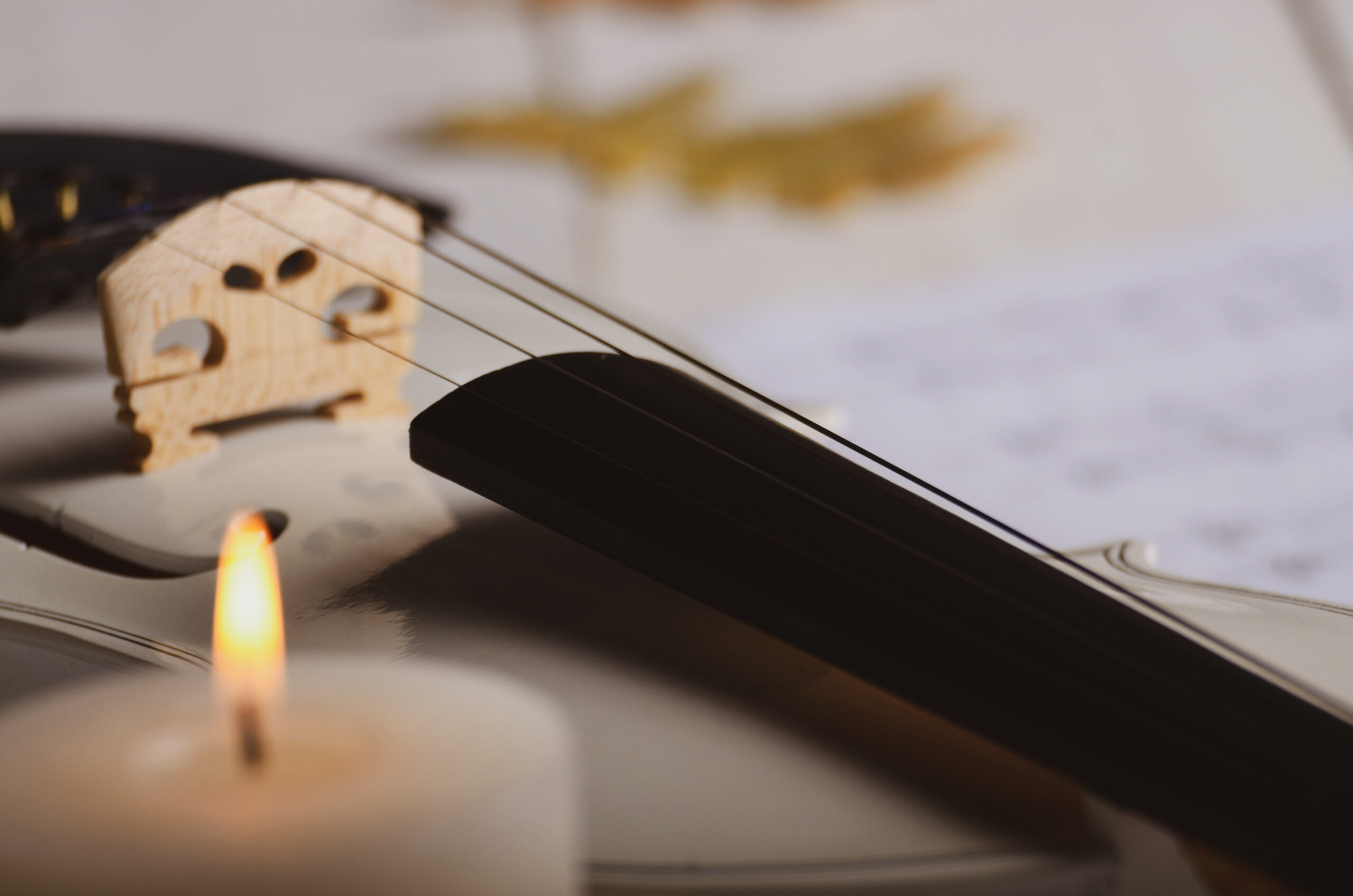
Conclusion
The best violin bridge is a simple piece crafted from maple, but it plays a fundamental role in the sound you get with your instrument. It is easy enough to overlook a simple part that you don’t have to adjust or play with regularly, like the strings or the bow. Still, without the right bridge, you cannot connect the input of your musical talent and your strings to the output of your final music product. By paying close attention to the bridge and checking on its angle and the feet positioning regularly, you can get repairs when needed and extend the lifespan of your violin bridge.
Looking for more interesting readings? Check out:

